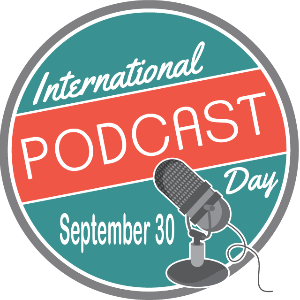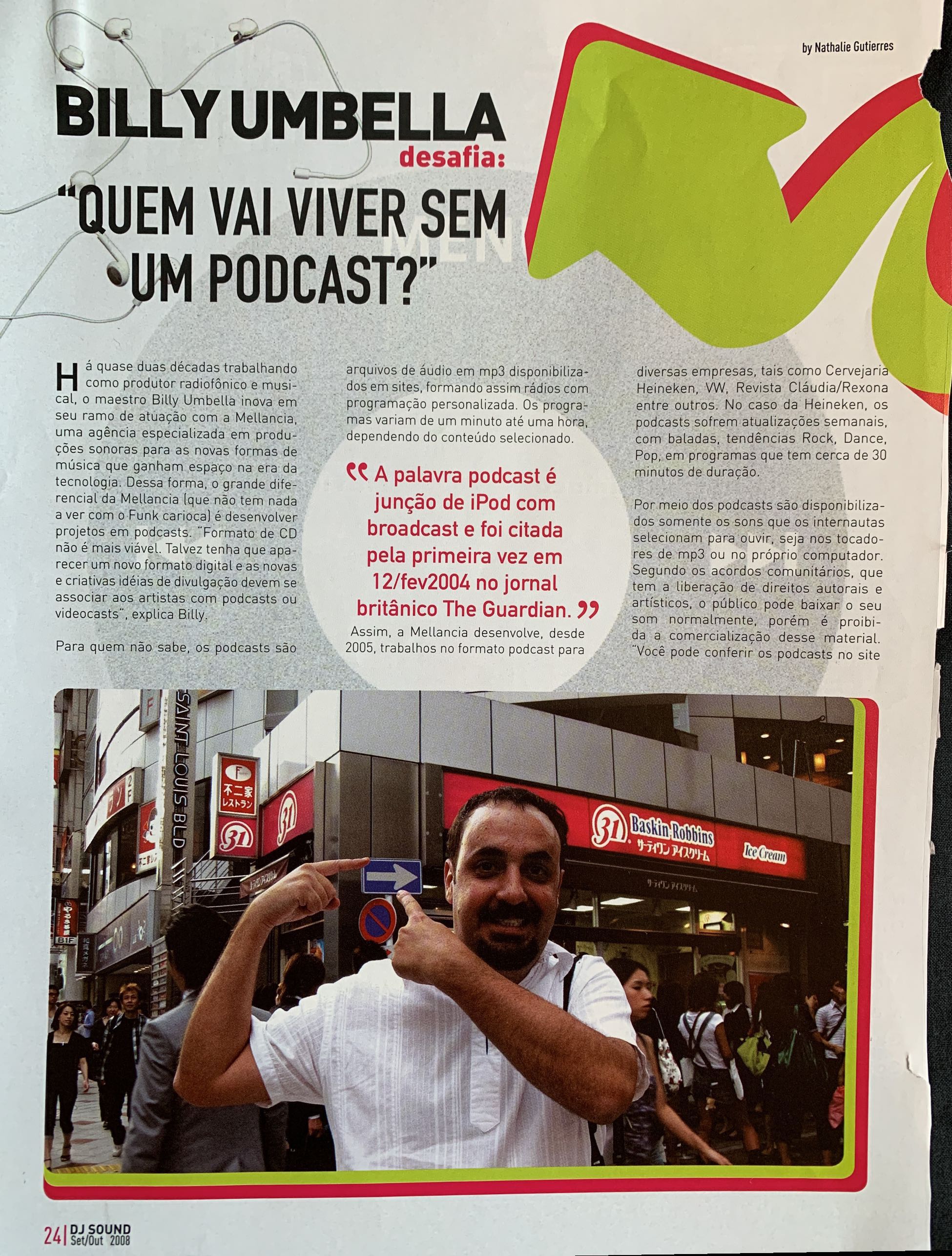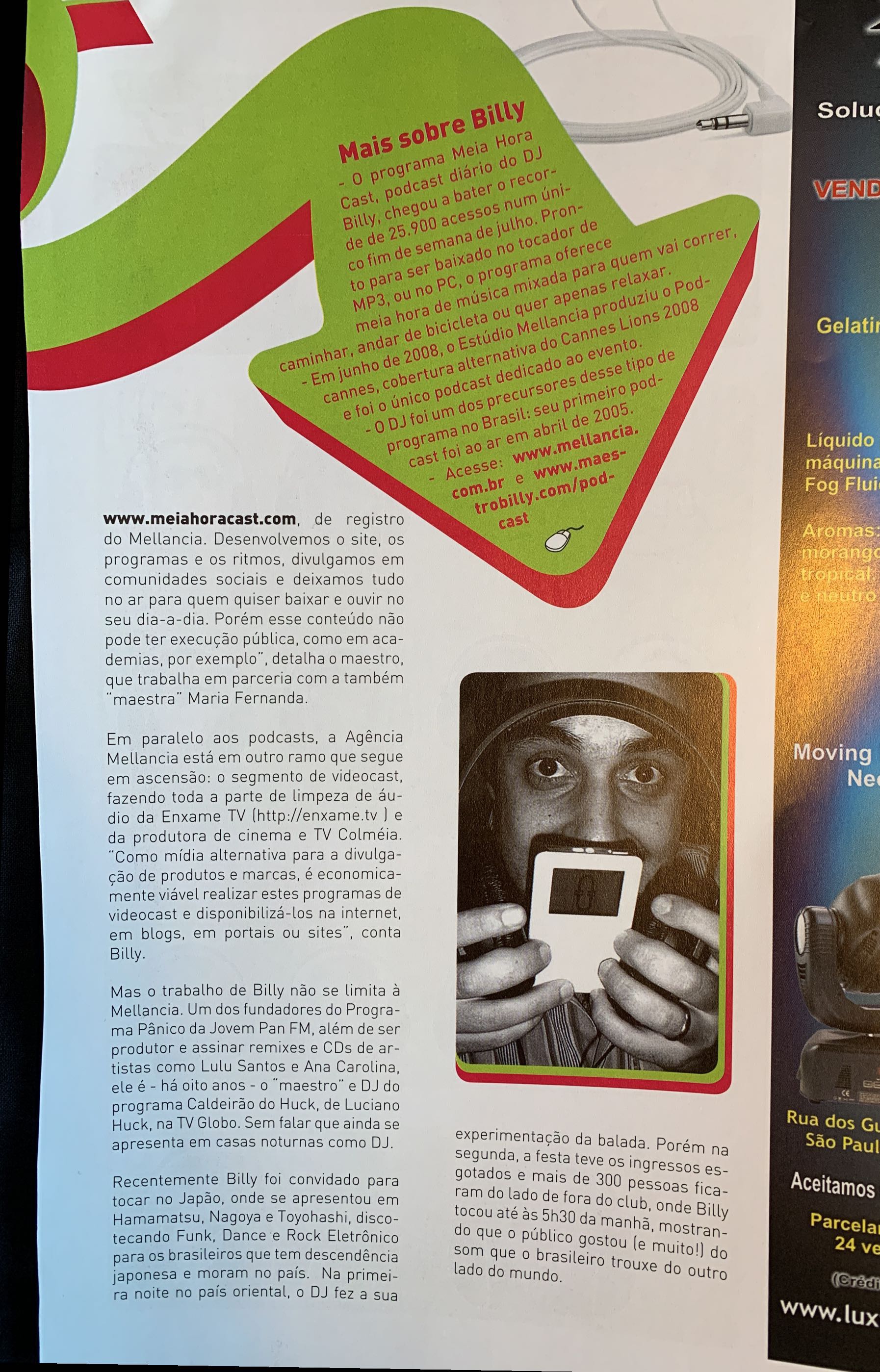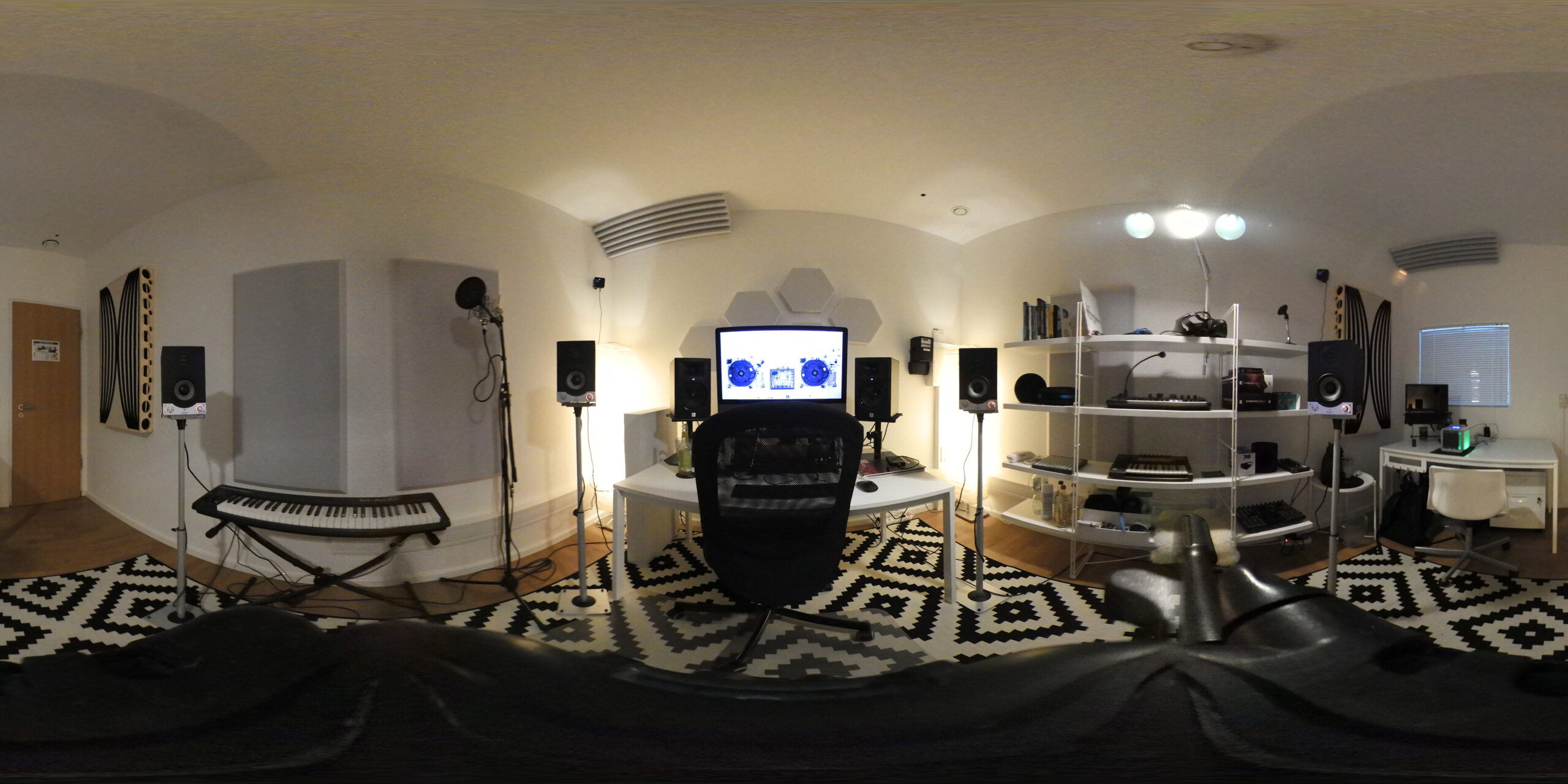How things changed after 20 years. And how you can create your own podcast!

Yesterday was International Podcast Day.
This date reminded me of an article about me published in DJ Sound magazine in 2008, with the provocative title:
“Who’s going to live without a podcast?”.

Sounds like an almost prophetic prediction, doesn’t it?
What started as an experiment in 2004 (I myself began producing personal and corporate podcasts in 2005) has transformed into a media phenomenon and a powerful tool for information distribution.

Back then, podcasts were seen as a way to share niche content for a limited audience. Today, in 2024, we can confirm everything that was anticipated in that article.
Also, you can listen to my latest podcast here on Substack. It is an AI Voice Clone I created, in Portuguese, to test the efficacy of the technology.
The evolution of podcasting is a testament to the power of digital innovation and changing media consumption habits. From a “nerd” hobby, podcasting has become a billion-dollar industry, with millions of daily listeners worldwide.
This podcast journey reflects not only technological advances but also significant cultural changes.
The demand for on-demand, personalized, and niche content has grown exponentially, and podcasting has positioned itself perfectly to meet this need.
Looking to the future, it’s interesting to imagine how podcasting will continue to evolve. With the advancement of AI, augmented reality, and other emerging technologies, the possibilities seem limitless.
And, since the possibilites are there, why not give them a try?
Here are some tips on how to start your own podcast:
Define your concept: Decide on your podcast’s topic, format, and target audience.
Plan your content: Outline episodes, create a content calendar, and prepare scripts or talking points.
Get the right equipment: Invest in a good microphone, headphones, and recording software.
Choose a recording and editing software: Options include Audacity (free), Reaper, or professional tools like Adobe Audition.
Record and edit your episodes: Focus on audio quality and engaging content.
Select a hosting platform: Choose a podcast host like Libsyn, Podbean, or Anchor to store and distribute your podcast.
Create cover art: Design eye-catching artwork that represents your podcast well.
Submit to podcast directories: List your podcast on popular platforms like Apple Podcasts, Spotify, and Google Podcasts.
Promote your podcast: Use social media, your network, and cross-promotion to grow your audience.
Consistency is key: Stick to a regular publishing schedule to build and maintain your audience.
Remember, starting a podcast takes time and effort, but with dedication and the right approach, you can create a successful show that resonates with your audience.
Best wishes,
Billy.

Leave a Reply